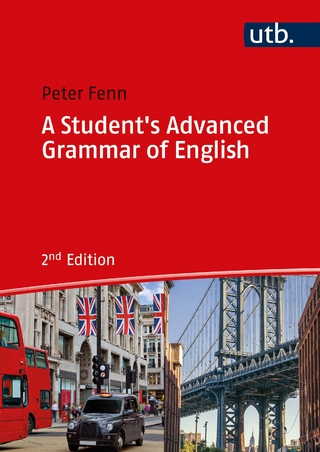Plant Horror
Palgrave Macmillan (Verlag)
978-1-137-57062-8 (ISBN)
Dawn Keetley teaches at Lehigh University in Bethlehem, Pennsylvania. She has published on several recent horror TV series as well as on horror films from the 1930s to the present. She is the editor of a collection of essays on The Walking Dead (2014) and is finishing a book on 19th century Boston murderer, Jesse Pomeroy, as well as a co-edited collection on the ecogothic in 19th century America. Angela Tenga currently teaches courses in literature, history, and popular culture at Florida Institute of Technology. Her research interests include monster studies, representations of crime in fiction, early English literature, and the renewal and revision of the medieval in modern popular culture. iv>
1. Introduction: Six Theses on Plant Horror; or, Why Are Plants Horrifying?.Dawn Keetley.-2. The Pre-cosmic Squiggle: Tendril Excesses in Early Modern Art and Science Fiction Cinema.Agnes Scherer.-3. Seeds of Horror: Dominance and Sacrifice in Sir Gawain and the Green Knight, The Wicker Man, and Children of the Corn.Angela Tenga.-4. The Mandrake’s Lethal Cry: Homuncular Plants in J.K. Rowling’s Harry Potter and the Chamber of Secrets.Keridiana W. Chez.-5. Green Hells: Monstrous Vegetations in Twentieth-Century Representations of Amazonia.Camilo Jaramillo.-6. What We Think about When We Think about Triffids: The Monstrous Vegetal in Post-War British Science Fiction.Graham J. Matthews.-7. The Revenge of the Lawn: The Awful Agency of Uncontained Plant Life in Ward Moore’s Greener Than You Think and Thomas Disch’s The Genocides.Jill E. Anderson.-8. Vegetable Discourses in 1950s US Science Fiction Film.Adam Knee.-9. Sartre and the Roots of Plant HorrorRandy Laist.-10. What Do Plants Want?.Gary Farnell.-11. Monstrous Relationalities: The Horrors of Queer Eroticism and “Thingness” in Alan Moore and Stephen Bissette’s Swamp Thing.Robin Alex McDonald and Dan Vena.-12. “Just a Piece of Wood”: Jan Švankmajer’s Otesánek and the EcoGothic.Elizabeth Parker.-13. An Inscrutable Malice: The Silencing of Humanity in The Ruins and The Happening.Jericho Williams.-14. The Sense of the Monster Plant.Matthew Hall
| Erscheinungsdatum | 12.01.2017 |
|---|---|
| Zusatzinfo | 14 Illustrations, color; XXIV, 278 p. 14 illus. in color. |
| Verlagsort | Basingstoke |
| Sprache | englisch |
| Maße | 148 x 210 mm |
| Themenwelt | Kunst / Musik / Theater ► Film / TV |
| Geisteswissenschaften ► Sprach- / Literaturwissenschaft ► Anglistik / Amerikanistik | |
| Naturwissenschaften ► Biologie ► Botanik | |
| Sozialwissenschaften ► Kommunikation / Medien ► Medienwissenschaft | |
| Sozialwissenschaften ► Soziologie | |
| ISBN-10 | 1-137-57062-8 / 1137570628 |
| ISBN-13 | 978-1-137-57062-8 / 9781137570628 |
| Zustand | Neuware |
| Haben Sie eine Frage zum Produkt? |
aus dem Bereich




